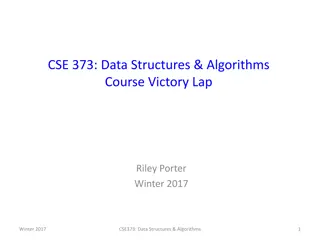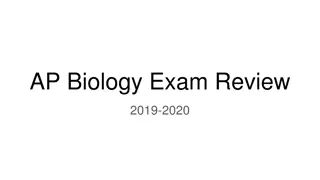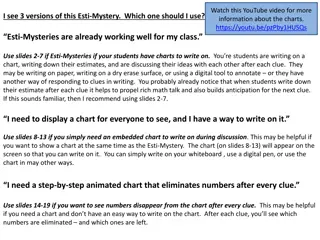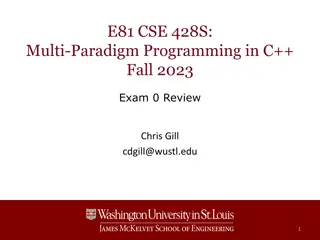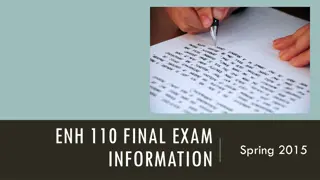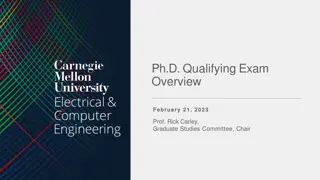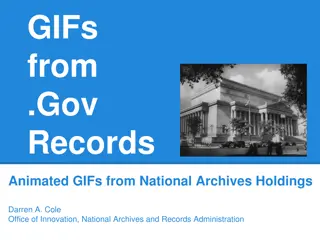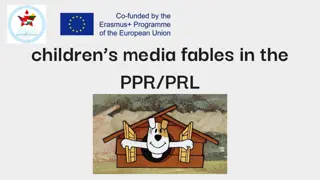Mastering Science Key Vocabulary and Exam Skills - Animated Science 2018
Enhance your understanding of important science concepts with the help of precise terms and practical examples in "Animated Science 2018". Explore the significance of accuracy, precision, resolution, and calibration in scientific measurements. Learn how to differentiate between these concepts and apply them effectively in exams, homework, and practical experiments.
Uploaded on Sep 07, 2024 | 1 Views
Download Presentation

Please find below an Image/Link to download the presentation.
The content on the website is provided AS IS for your information and personal use only. It may not be sold, licensed, or shared on other websites without obtaining consent from the author. Download presentation by click this link. If you encounter any issues during the download, it is possible that the publisher has removed the file from their server.
E N D
Presentation Transcript
Science Key Vocab Exam Skills! Animated Science 2018
Instructions. Your exam will include some very specific terms of reference for which you must know the exact way to use them. You already have a key terms sheet .. Use this booklet to give you some ideas to help you out when attempting your homework exam questions or Educake. It can also be used in class. Animated Science 2018
Accuracy A measurement of a result is considered accurate if it is judged to be close to the true value. Before an investigation started, a student checked the accuracy of three different temperature probes. The student put the probes in a beaker of boiling water that had a temperature of 100.0 C. The readings from the three temperature probes are shown in Don t confuse this with the idea of precision which is reducing the random errors by repeating an experiment. (probe) C (allow 103.2) largest difference between reading and actual temperature Animated Science 2018
Precision Precise measurements are ones in which there is very little spread about the mean value. Precision depends only on the extent of random errors. It gives no indication of how close results are to the true value. Reading 1 2 3 Mean A 4.1 5.1 4.5 4.6 B 6.1 6.1 6.0 6.1 C 8.3 8.9 10 9.1 take more readings to calculate a mean (1) take more readings between 5.0 m and 10.0 m (1) see where the change occurs (1) to reduce effect of random errors (1) take more readings above 15.0 m (1) accept take more readings at longer lengths to see if trend continues (1) Animated Science 2018
Resolution Resolution: This is the smallest change in the quantity being measured (input) of a measuring instrument that gives a perceptible change in the reading. Animated Science 2018
Calibration Marking a scale on a measuring instrument. This involves establishing the relationship between indications of a measuring instrument and standard or reference quantity values, which must be applied. e.g. Jemma finds some old mercury thermometers, but the scales have worn off over the years. She doesn't want to throw them away as they appear to work very well. She decides to calibrate them. Filling a beaker with ice and a little water, she lowers the thermometers into the mixture. Using a permanent marker, she marks a line on the thermometer to show the freezing point of water (0 C) For example, placing a thermometer in melting ice to see whether it reads zero, in order to check if it has been calibrated correctly. Jemma then boils a beaker of water and places the thermometers into it. Again she marks the level of the mercury in the tubes (100 C) Once cool, Jemma carefully measures the distance between the marks, which is 20.0 cm. 20cm / 50 = 0.4cm 1) If Jemma wants to mark every 2 C on the thermometer, what will be the separation of the lines she needs to mark? The scale is even 2) What assumption is made in calibrating a thermometer in this way? Animated Science 2018
Evidence Data which has been shown to be valid. Data is only valid for use in coming to a conclusion if the measurements taken are affected by a single independent variable only. Data is not valid if for example a fair test is not carried out or there is observer bias. These simple experiments will provide valid data because . . . . . . examine the speed. Only the interval of distance is changed. When you change the distance from the source the count rate changes. No other changes are made The ball bearing is dropped the same way each time to Animated Science 2018
Measurement error The difference between a measured value and the true value. Millie measures the mass of a mug as being 250 g, but its true value is actually 260 g. The difference is a measurement error and is 10g James measures the PD across a resistor to be 4.9V but the true value is 5V. Peter measures the light intensity to be 150 lux but in fact the true value is 139 lux Task Work out the difference between the measured and true values as an absolute and then % uncertainty for Peter and James readings. 5V - 4.9V = 0.1V . 0.1V / 4.9V *100% = 2% (1.s.f) 150lux - 139lux = 11lux .. 11/139 * 100% = 7.9% (2 s.f) Animated Science 2018
Data Information, either 1. qualitative (without numbers) 2. quantitative (with numbers) That has been collected in an experiment. You are expected to look at the data and interpret things about it 18 the count rate for the source Animated Science 2018
Anomalies These are values in a set of results which are judged not to be part of the variation caused by random uncertainty. A student investigated how the speed of a ball bearing changes as the ball bearing falls through a tube of oil. The student measured the time taken for the ball bearing to fall different distances. Each distance was measured from the top of the oil and results plotted You must try and explain or account for them using the situation and data You should ignore them from your trends or before you calculate your mean The student has identified one of the results as being anomalous. The anomalous result was caused by the stopwatch being started ..................... the ball bearing was released. After As Before Because . It would have travelled less distance in the time recorded Animated Science 2018
Random error These cause readings to be spread about the true value, due to results varying in an unpredictable way from one measurement to the next. Random errors are present when any measurement is made, and cannot be corrected. The effect of random errors can be reduced by making more measurements and calculating a new mean. Animated Science 2018
Random error Reducing the issues These cause readings to be spread about the true value, due to results varying in an unpredictable way from one measurement to the next. Random errors are present when any measurement is made, and cannot be corrected. The effect of random errors can be reduced by making more measurements and calculating a new mean. calculate a mean spot anomalies reduce the effect of random errors Animated Science 2018
Systematic error These cause readings to differ from the true value by a consistent amount each time a measurement is made. Sources of systematic error can include the environment, methods of observation or instruments used. Systematic errors cannot be dealt with by simple repeats. If a systematic error is suspected, the data collection should be repeated using a different technique or a different set of equipment, and the results compared. In 2011, some of the scientists working at the CERN particle laboratory published the results of experiments they had conducted over the previous three years. But they had some unexpected results. systematic error Animated Science 2018
Range +/-50A MOVING NEEDLE METERS or 50 x 10-6A This scale has very small divisions or enables you to have smaller intervals Each one is 2 A so you can see very small changes in current Adjust the screw to put the needle on zero at the start or you will have a zero error or systematic error This meter has a parallax error as there is a moving needle, you must align your view at 90 Animated Science 2018
A zero error will appear here on the scale when it is not plugged in. DIGITAL METER ERRORS You can adjust the scale to be very large from You cannot adjust to you have to take it away from any readings. 2 A up to 10A So you can measure larger currents This meter does not have parallax errors as there is no moving needle Animated Science 2018
Fair test: A fair test is one in which only the independent variable has been allowed to affect the dependent variable. However, you cannot just state fair test you need some reasons! In this case the obvious answer is the type of liquid. (which is a categorical variable) But what about the controls, this is less obvious until you apply the Science and relate to the key idea.. surface area or duration of experiment accept shape of beaker size of beaker is insufficient Rate of evaporation Animated Science 2018
Hypothesis Examples . A proposal intended to explain certain facts or observations. A good hypothesis that leads to valid results should pass these tests. .. If you turn out all the lights, you will fall asleep faster. (Think: How would you test it?) 1. Does the hypothesis relate an independent and dependent variable? Can you identify the variables? If you drop different objects, they will fall at the same rate. If you eat only fast food, then you will gain weight. 2. Can you test the hypothesis? In other words, could you design an experiment that would allow you to establish or disprove a relationship between the variables? If you use cruise control, then your car will get better gas mileage. If you apply a top coat, then your manicure will last longer. 3. Would your experiment be safe and ethical? If you turn the lights on and off rapidly, then the bulb will burn out faster. 4. Is there a simpler or more precise way to state the hypothesis? If so, rewrite it. Animated Science 2018
Validity and Valid conclusions Validity is the suitability of the investigative procedure to answer the question being asked. For example, an investigation to find out if the rate of a chemical reaction depended upon the concentration of one of the reactants would not be a valid procedure if the temperature of the reactants was not controlled. any six from: A valid conclusion is supported by valid data, obtained from an appropriate experimental design and based on sound reasoning. switch on read both ammeter and voltmeter (allow read the meters) adjust variable resistor to change the current take further readings draw graph (of) V against I (allow take mean) R = V / I allow take the gradient of the graph Animated Science 2018
Interval The quantity between readings, eg a set of 11 readings equally spaced over a distance of 1 metre would give an interval of 10 centimetres. You should always quote a value to a specific number of decimal places and give an appropriate unit. What is the interval used for the Weights added 1N . Animated Science 2018
Zero Error Any indication that a measuring system gives a false reading when the true value of a measured quantity is zero, eg the needle on an ammeter failing to return to zero when no current flows. A zero error may result in a systematic uncertainty. to reduce the error in measuring the extension of the spring as the ruler at an angle would make the measured extensions shorter Animated Science 2018
Range The maximum and minimum values of the independent or dependent variables; important in ensuring that any pattern is detected. For example a range of distances may be quoted as either: 'From 10 cm to 50 cm' or 'From 50 cm to 10 cm'. 1 (N) to 6 (N) accept from 0 (N) to 6 (N) Animated Science 2018
Prediction A prediction is a statement suggesting what will happen in the future, based on observation, experience or a hypothesis. gives a straight line through the origin Animated Science 2018
Repeatable v Reproducible Reproducible: A measurement is reproducible if the investigation is repeated by another person, or by using different equipment or techniques, and the same results are obtained. Previously known as reliable. Repeatable: A measurement is repeatable if the original experimenter repeats the investigation using same method and equipment and obtains the same results. Previously known as reliable. Animated Science 2018
Sketch graph A line graph, not necessarily on a grid, that shows the general shape of the relationship between two variables. It will not have any points plotted and although the axes should be labelled they may not be scaled. You may have to draw one! 1. Which feature of the graph represents the negative acceleration of the car?................... 1) Gradient of sloping line 2. Which feature of the graph represents the distance travelled by the car?......................... 2) Area under the graph Animated Science 2018
Uncertainty The interval within which the true value can be expected to lie, with a given level of confidence or probability Task 1 Look at ruler A and B, can you work out the uncertainty in the readings and compare . eg 'the temperature is 20 C 2 C, at a level of confidence of 95%'. A . ( 26 1) mm OR (1/26) * 100 = 4% Task 2 B .. ( 2.5 0.5) cm OR (0.5/2.5) * 100 = 20% a) What is the uncertainty of a resolution of 0.01 ml in 5.52 ml? b) What is the uncertainty of a resolution of 0.5 ml in 5.5 ml? a) .. (0.01 5.52) 100 % = 0.18 % b) . (0.5 5.5) 100 % = 9.1 % Animated Science 2018
Variables These are physical, chemical or biological quantities or characteristics. We can split them down into Scalars which have a value and sometimes a unit, and vectors which have a value and direction and unit 5kg 25 ms-1 5 C Animated Science 2018
Continuous variables can have values (called a quantity) that can be given a magnitude either by counting (as in the case of the number of shrimp) or by measurement (eg light intensity, flow rate etc). Previously known as discrete variable. Categoric variables have values that are labels, eg names of plants or types of material. Animated Science 2018
Control Variables: Is a variable which may, in addition to the independent variable, affect the outcome of the investigation and therefore has to be kept constant or at least monitored. weight (lifted) or height (lifted) Animated Science 2018
Dependent Variable: Is the variable of which the value is measured for each and every change in the independent variable. At times we would plot this on the y axis but this is not always the case. In Physics/ Chem in particular where the gradient is important we must plot according to what we want to find i.e. resistance of a wire or a rate of reaction. Animated Science 2018
Independent Independent variable is the variable for which values are changed or selected by the investigator. Task which way is that around for this experiment and why? The spring then extended because of the weight so it becomes the dependant You added the weight so it becomes the independent Animated Science 2018
Proportionality: The constant is called the coefficient of proportionality or proportionality constant. If one variable is always the product of the other variable and a constant, the two are said to be directly proportional. x and y are directly proportional if the ratio y to x is constant. OR y = mx so y/x = m = constant The relationship should have no intercept! y = mx + c Animated Science 2018


